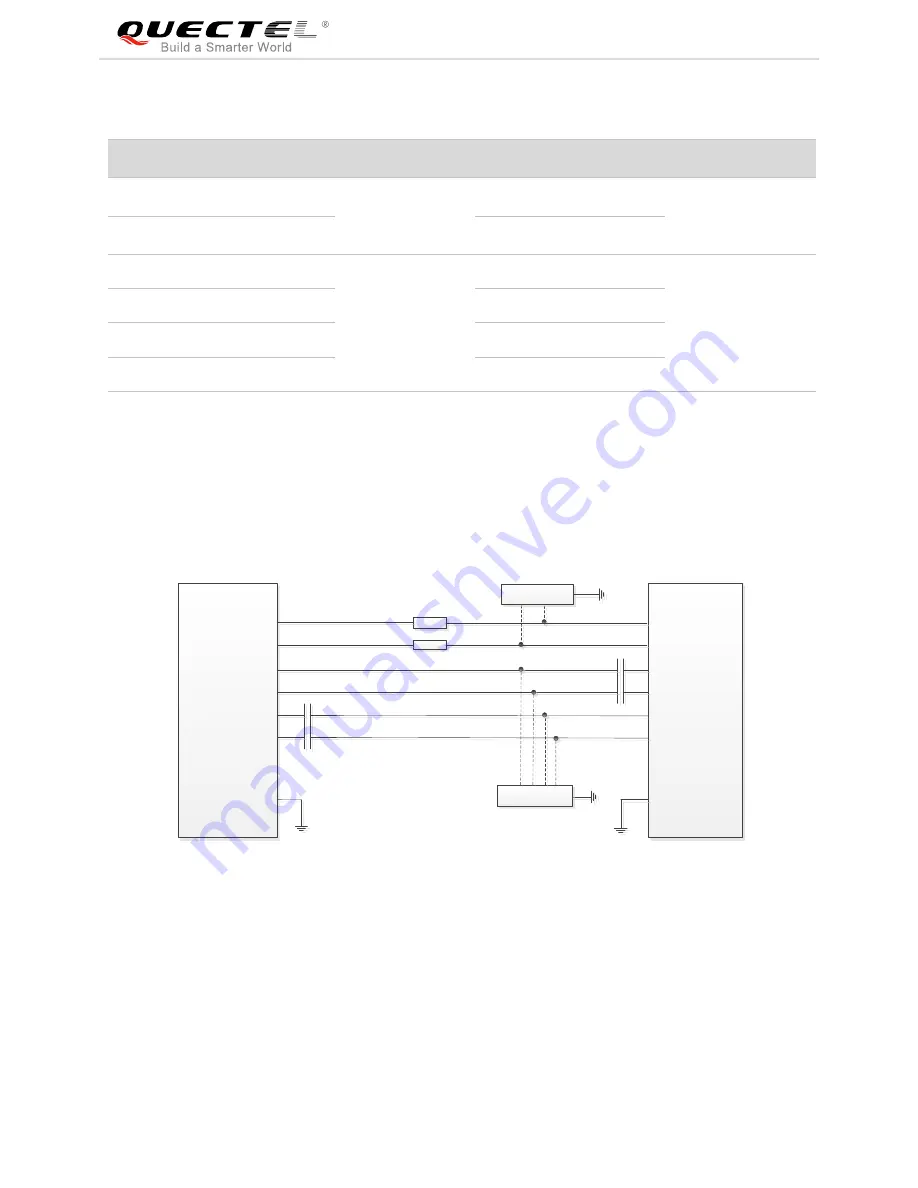
19
/
50
Table 7: Pin Definition of USB 2.0&3.0 Interfaces
EP06 is compliant with USB 2.0 and USB 3.0 specifications. Meanwhile, The USB 2.0 interface supports
high speed (480Mbps) mode and full speed (12Mbps) mode. It is used for AT command communication,
data transmission, GNSS NMEA output, software debugging, firmware upgrade and voice over USB2.0*.
The data rate of USB 3.0 interface is up to 5Gbps, and it is used for AT command communication, data
transmission, GNSS NMEA output and voice over USB 3.0*. The following figure shows a reference
circuit of USB 2.0&3.0 interfaces.
GND
USB3.0_TX-
USB3.0_TX+
GND
ESD Array
USB3.0_RX-
USB3.0_RX+
USB3.0_RX-
USB3.0_RX+
USB3.0_TX-
USB3.0_TX+
C3
C4
USB_DP
USB_DM
R1
R2
0R
0R
USB_D-
USB_D+
C1
C2
ESD Array
100nF
100nF
100nF
100nF
Moudule
AP
Figure 5: Reference Circuit of USB2.0&3.0 Interfaces
In order to ensure the integrity of USB 2.0&3.0 data line signal, R1, R2, C1 and C2 components must be
placed close to the module, C3 and C4 components must be placed close to the MCU, and also these
components should be placed close to each other.
In order to ensure the USB 2.0&3.0 interface design corresponding with the USB 2.0&3.0 specifications,
please comply with the following principles:
Pin No. Pin Name
I/O
Power Domain
Description
Comment
36
USB_D-
IO
Compliant with
USB 2.0 standard
specification
USB differential data (-)
Require differential
impedance of 90Ω
38
USB_D+
IO
USB differential data (+)
23
USB3.0_TX-
DO
Compliant with
USB 3.0 standard
specification
USB 3.0 transmit data (-)
Require differential
impedance of 90Ω
25
USB3.0_TX+
DO
USB 3.0 transmit data (+)
31
USB3.0_RX-
DI
USB 3.0 receive data (-)
33
USB3.0_RX+
DI
USB 3.0 receive data (+)
















































